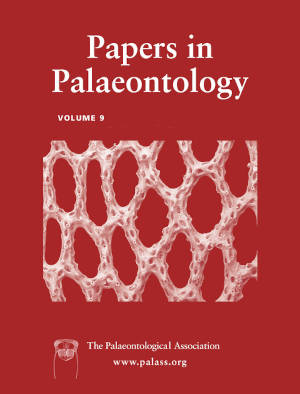Reg. Charity No. 1168330

Abstract The early Paleocene (Danian) Barentsburg flora from the Firkanten Formation, Svalbard, provides a valuable insight into the environment and climate of the Arctic early in the warm Palaeogene prior to the Paleocene–Eocene Thermal Maximum (PETM) event. The flora includes c. 50 species of ferns, ginkgos, conifers and angiosperms. Angiosperms predominate and are represented by the families Platanaceae, Cercidiphyllaceae, Trochodendraceae, Hamamelidaceae, Fagaceae, Betulaceae, Nyssaceae and several taxa of uncertain taxonomic position. Palaeoclimate parameters, calculated using a new calibration of the Climate Leaf Analysis Multivariate Program (CLAMP), indicate that Svalbard in the early Paleocene was characterized by a temperate, maritime, humid, seasonal climate with cool mild winters and warm summers. Humidity was highest during winter months. Short-term winter snow cover and light frosts were likely to have been frequent. The CLAMP analysis yields a mean annual temperature of 10.1 ± 1.98°С, a warmest month mean temperature of 19.2 ± 2.49°C and a coldest month mean temperature of 1.7 ± 3.24°С. The growing season lasted c. 6 months. Precipitation during this growth period was 572.4 ± 296.50 mm, while vapour pressure deficit and potential evapotranspiration indicate very high humidity year-round, with summer being only slightly drier than winter. Taken together with data from other early Paleocene circum-Arctic sites, these results point to highly uniform, temperate and extremely humid conditions around the margins of the early Cenozoic Arctic Ocean. This condition represents the warm background condition that dominated in the Arctic prior to the anomalous extreme warmth of the early Eocene.